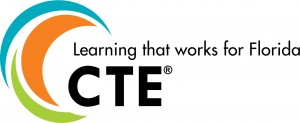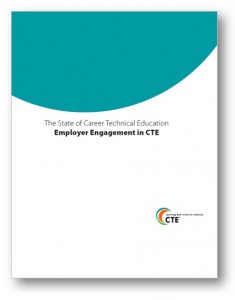 Tomorrow morning the House Appropriations subcommittee on Labor, Health and Human Services, and Education (Labor-HHS-ED) will mark-up an appropriations bill for Fiscal Year (FY) 2016— the portion of the federal budget that funds the U.S. Department of Education (USDE) and, relatedly, the Carl D. Perkins Act’s (Perkins) basic state grant program. While still a long way off from the House’s full consideration, reconciliation with a forthcoming Senate proposal, and ultimate enactment, the subcommittee’s mark-up of this bill is still a significant step in the federal budget and appropriations process that has not occurred successfully in several years. The mark-up process, where the bill will be further amended by members of the subcommittee, will provide insight into the committee’s funding priorities for education and workforce development programs as the Congressional appropriations process continues.
Tomorrow morning the House Appropriations subcommittee on Labor, Health and Human Services, and Education (Labor-HHS-ED) will mark-up an appropriations bill for Fiscal Year (FY) 2016— the portion of the federal budget that funds the U.S. Department of Education (USDE) and, relatedly, the Carl D. Perkins Act’s (Perkins) basic state grant program. While still a long way off from the House’s full consideration, reconciliation with a forthcoming Senate proposal, and ultimate enactment, the subcommittee’s mark-up of this bill is still a significant step in the federal budget and appropriations process that has not occurred successfully in several years. The mark-up process, where the bill will be further amended by members of the subcommittee, will provide insight into the committee’s funding priorities for education and workforce development programs as the Congressional appropriations process continues.
As we have shared previously, both the House and the Senate have agreed to and passed a budget framework that stays within the bounds of the Budget Control Act’s (BCA) statutorily required budget caps (also known as sequester caps) which limit the overall size the federal budget well into the next decade. Early this morning, the House Appropriations subcommittee on Labor-HHS-ED released its draft of the FY 2016 Labor-HHS-ED appropriations bill which adheres to these caps and would cut USDE’s budget by $2.8 billion—a figure that is larger than the reduction to USDE’s budget as a result of BCA-mandated sequestration in FY 2013.
At present, it remains unclear what the subcommittee is proposing with regards to the Perkins basic state grant program. The bill as currently written combines funding for adult education and Career Technical Education (CTE) into a single lump sum which is approximately $7 million below FY 2015 levels. What is uncertain is how this $7 million reduction will be distributed between adult education and CTE— something tomorrow’s mark-up process should make clearer.
As a reminder, the Perkins basic state grant program has been funded at $1.117 billion since FY 2014 where the program restored 96 percent of its sequestration cuts from FY 2013. Nevertheless, the state grant program remains $5.4 million below pre-sequester levels. More information on Perkins funding levels can be found here. NASDCTEc and the Association of Career and Technical Education (ACTE) have been urging Congress to fund Perkins at pre-sequester levels in FY 2016 and we encourage you to contact your members of Congress to remind them about the importance of Perkins funding. Be sure to voice your support through ACTE’s action center here!
In addition to the above implications for Perkins state grants specifically, the draft bill also proposes to eliminate 19 existing education programs of interest to the CTE community including School Improvement grants, funding for elementary and secondary school counseling, and Investing in Innovation (I3) grants among others. It contains a few USDE-related policy riders too—provisions unrelated to funding— that would prohibit the Department from enforcing its imminent “Gainful Employment†regulations, block USDE from implementing its forthcoming college ratings system later this summer, prevent the Department from using 21st Century Community Learning Centers funds to expand learning time, and would create limitations for how USDE defines “credit hour†for the purposes of federal financial aid as well as changing program integrity rules related to how distance learning programs are authorized by states.
It is important to note that both Democrats and Republicans remain extremely divided over how to fund federal programs in FY 2016 and in particular how to grapple with the self-imposed sequester caps that are anathema to both party’s distinct funding priorities. This partisan disagreement will continue to deepen as the year continues and it remains highly unlikely that lawmakers will reach agreement on the 12 independent funding bills, including Labor-HHS-ED, that are needed to fund the totality of the federal government. While CTE and the Perkins Act remain solid, bipartisan issues, the larger debate around federal appropriations will continue to take center stage as the end of the 2015 fiscal year draws to a close on September 30th.
Be sure to check back tomorrow for additional updates on this process, along with a host other CTE-related information from the past few weeks.
Steve Voytek, Government Relations ManagerÂ





